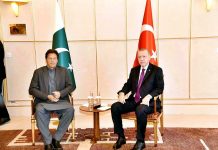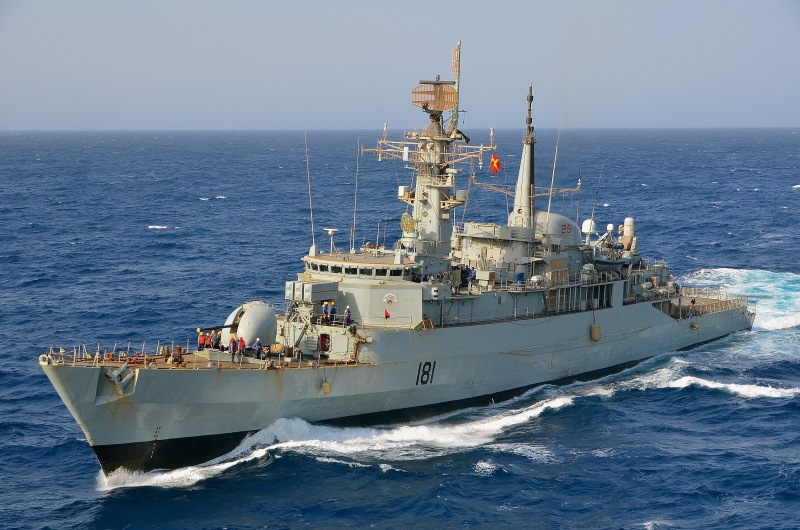etitiveness-report-ranks-pakistan-at-122-among-138-countries-cea031baadaeb560ce1d8d38af230791.jpg">
ISLAMABAD/GENEVA: Pakistan has demonstrated an extraordinary recovery on the economic front, where the country has been successful in improving its macroeconomic framework to improve its global competitiveness
Pakistan is classified as a factor driven economy, which basically depends on improving its institutions, infrastructure, macroeconomic stability, health and primary education indicators. Pakistan improved from 119 to 111 on the institutions pillars, while infrastructure improved only one point and stands at 116 this year. On the Macroeconomic Stability Pillar Pakistan jumped from 128 in 2015 to 116. A solid 12 points gain, which shows the country has made economic progress on the gross national savings percentage of GDP, where Pakistan improved from 115 in 2015 to 107 this year. The government debt percentage to GDP also ranks at 95 among 138 economies in the world. The biggest gain, however, is in the area of inflation; annual percentage change where Pakistan moved from 127 in 2015 to 93 in 2016.
On other pillars, among 138 countries, Pakistan ranks 128 in health and primary education, 123 in higher education and training, 117 in goods market efficiency, 129 in labour market efficiency, 107 in financial market sophistication, 119 in technological readiness, 29 in market size 29, 95 in business sophistication and 75 in innovation.
Amir Jahangir, Chief Executive Officer of Mishal Pakistan, the Country Partner Institute of the Global Competitiveness and Benchmarking Network of the World Economic Forum said, “Pakistan has shown improvements on some of the key indicators to improve its global competitiveness, however the country still needs to integrate itself into the digital and cyber world. Pakistan with approx. A population of 186 million offers great prospects if data and knowledge-based policy making is introduced in the country.” He further said, “decision making based on big-data can enable the governments to engage their citizens in policy making and democratisation of the development process. In the fourth industrial revolution Pakistan can make a larger digital footprint in the cyber world, thus making its mark on the global policy making. However, the country needs to equip its next generation with education and knowledge through digital services and mobile broadband”.
This year among 114 global competitiveness indicators, Pakistan showed improvements on 54 key indices, whereas on 50 indices the country lost its previous position. 10 indices remained unchanged from last year. Pakistan, at 122, ranks last amongst its South Asian neighbors, where India leads at 39 followed by Sri Lanka 71, Bhutan 97, Nepal 98 and Bangladesh at 106.
South Asia continues its upward trend as competitiveness improves in most countries in the region. India has been the best performer, climbing to 39th from 55th last year. Over the past decade, the subcontinent has focused on improving overall health and primary education levels and upgrading available infrastructure, areas of particular importance given the resource-driven nature of its economy. However, the latter remains the second weakest spot in the region, just after technological readiness.
To improve the soft-data on Pakistan, the World Economic Forum closely worked with Mishal Pakistan, the country partner institute of the Global Competitiveness and Benchmarking Network of WEF. This year a total of 350 respondents from the business community were contacted through the annual Executive Opinion Survey, whereas 114 were selected from last year and 236 from this year. The World Economic Forum reached out to 14,000 business executives globally.
The Global Competitiveness Report’s competitiveness ranking is based on the Global Competitiveness Index (GCI), which was introduced by the World Economic Forum in 2005. Defining competitiveness as the set of institutions, policies and factors that determine the level of productivity of a country, GCI scores are calculated by drawing together country-level data covering 12 categories – the pillars of competitiveness – that collectively make up a comprehensive picture of a country’s competitiveness. The 12 pillars are: institutions, infrastructure, macroeconomic environment, health and primary education, higher education and training, goods market efficiency, labour market efficiency, financial market development, technological readiness, market size, business sophistication, and innovation.












